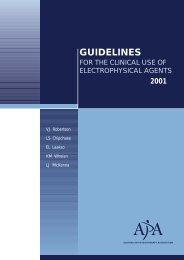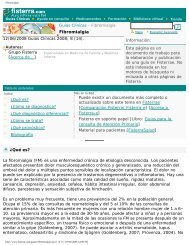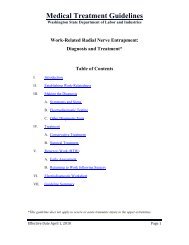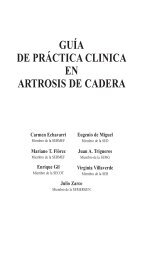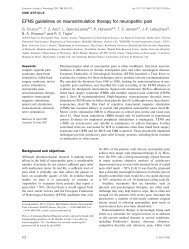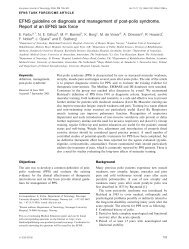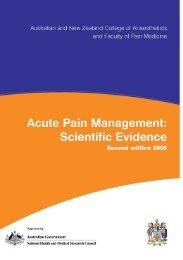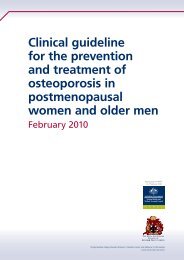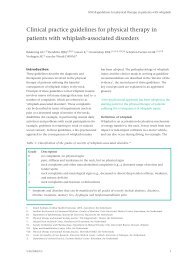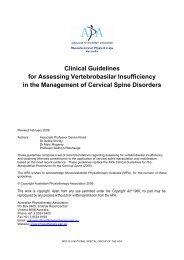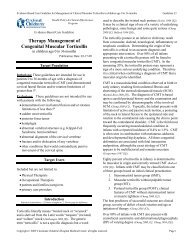Practice Parameter and Literature Review of the Usefulness of ...
Practice Parameter and Literature Review of the Usefulness of ...
Practice Parameter and Literature Review of the Usefulness of ...
You also want an ePaper? Increase the reach of your titles
YUMPU automatically turns print PDFs into web optimized ePapers that Google loves.
<strong>Practice</strong> <strong>Parameter</strong>: Carpal Tunnel SyndromeTable 19.Comparison <strong>of</strong> Median <strong>and</strong> Ulnar SensoryConduction Between Wrist <strong>and</strong> Ring Finger in CTS.Author Jackson <strong>and</strong> Clifford 110 Uncini <strong>and</strong> colleagues 254Year 1989 1993Number <strong>of</strong> Normal H<strong>and</strong>s (subjects) 38 (38) 72 (47)Normal Subject’s Age: Mean (range) 42 (21 to 69) 45 (18 to 78)Number <strong>of</strong> CTS H<strong>and</strong>s (patients) 131 (123) 95 (70)CTS Subject’s Age: Mean (range) 53 (21 to 85) 49 (26 to 78)Technique: Conduction Distance 14 cmIdentical for each subjectRange: 12 cm to 14 cmStimulation Site Wrist Ring fingerRecording Site Ring finger WristMinimum H<strong>and</strong> Temperature 31°C 32°CDifference Median <strong>and</strong> Ulnar OnsetLatency ± SD0.13 ± 0.15 ms 0.14 ± 0.13 msDifference Median <strong>and</strong> Ulnar PeakLatency ± SD0.09 ± 0.13 ms Not reportedCriteria for Abnormal Value Mean + 2 SD Mean + 2 SDAbnormal ValueOnset >0.43 msPeak >0.35 msOnset >0.4 msPeak (not reported)Specificity <strong>of</strong> Abnormal Value 95% (actual) 97.5% (estimate)Sensitivity <strong>of</strong> Abnormal Value 82% 77% (89%)*Nerve conduction <strong>of</strong> <strong>the</strong> branches <strong>of</strong> <strong>the</strong> median <strong>and</strong> ulnar nerves to <strong>the</strong> ring finger can be measured by securing surface ring electrodes on <strong>the</strong> ringfinger <strong>and</strong> surface disc electrodes over both <strong>the</strong> median <strong>and</strong> ulnar nerves proximal to <strong>the</strong> wrist crease with identical conduction distances (14 cm).The conduction time (ms) from <strong>the</strong> stimulus artifact to <strong>the</strong> onset (onset latency) or peak (peak latency) <strong>of</strong> <strong>the</strong> SNAP is determined <strong>and</strong> <strong>the</strong> medianulnarlatency difference calculated.* In <strong>the</strong> Uncini <strong>and</strong> colleagues paper, 254 comparison <strong>of</strong> orthodromic median <strong>and</strong> ulnar sensory conduction from D4 along an identical distance to <strong>the</strong>wrist (range 12-14 cm for all tests) was done only in <strong>the</strong> CTS patients with (1) normal median sensory conduction from D2 to wrist (SCV >45 ms)<strong>and</strong> (2) normal median motor conduction (MDL



